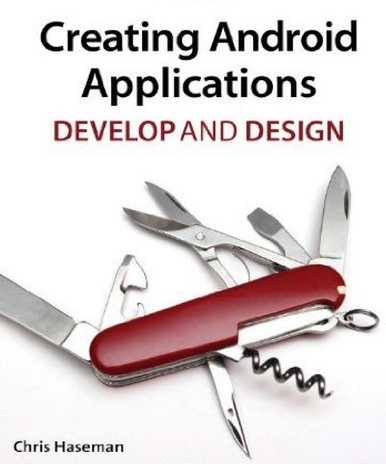| Creating Android Applications |
Author: Chris Haseman A title in a series which often attempts to make technology seem a little too simple. Can you explain Android development in such as short book? The Develop and Design series is an attempt to make many areas of programming accessible to the beginner, or even to the non-programmer. Of the titles that I have looked at so, far my feeling has been that it is usually better to leave the topic alone if you are not going to put in the effort to really understand it. As a result I approached Creating Android Applications with apprehension - but I was pleasantly surprised.
This is not a book for the 100% beginner. You need to know how to program in Java and you need to be able to program fairly well However, it is a book that is suitable if you are trying to find a way into Android development, which can be confusing even if you know Java. This book takes a nice steady pace and it explains things clearly. It doesn't explain everything and it achieves a certain amount of its simplicity and its short length by avoiding some difficult topics - but this is really the only way you could do it.
The book starts off with the usual getting started chapter and by the end of Chapter 2 you have not only completed your first program but have started to see some of the structure of the Android system. In particular, you have looked at activities and intents and been warned about the app lifecycle and the problems it causes. In Chapter 3 the book deals with creating simple user interfaces, including using the XML markup and runtime approaches. It also deals with resource management. Chapter 4 is about working with data and how to work with the Async task. and services. Over the next two chapters we learn about displaying data - adaptors, listviews and lists and how to write a service. Chapter 7 introduces the problem of creating one application that will run on multiple devices. From here we have a look at media in the form of music and video and geolocation and using maps. Chapter 10 introduces the problems of using fragments to create a more appropriate tablet experience and finally we have a chapter on publishing your application. There is a lot missing of course and if you want to go beyond a standard Android application and, say, work with the hardware or do something out of the ordinary, you will need another book. However, the book nearly always points out what is being missed out and explains what is covered in enough depth for you to understand. The author has a sense of humor that might irritate some readers so be warned; if you can't stand headings like "Show me the Map!! or "Run, Baby, Run" then you need another book. For me the humor was low key enough not to get in the way. The book is also nicely presented, which is what you would expect for a book with "design" in its title. The programs are double spaced and there feels to be a lot of white space on display, but overall it works. You do need to be a fairly reasonable programmer to follow the explanations in the book, but if you have been finding Android intimidating this is a good place to get started. A recommended way in.
|
|||
| Last Updated ( Saturday, 08 December 2012 ) |


